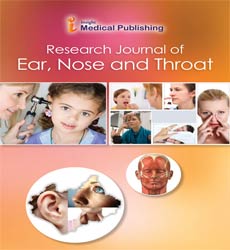A Descriptive Study on the Knowledge and Attitudes of Puerperal Mothers on Infant Hearing Loss, Detection and Intervention in a Tertiary Government Hospital in Manila
Abstract
Background: The universal newborn hearing screening program is multi-step, time-sensitive wherein the parent is vital for its benefit to be fulfilled. Understanding variables that influence parental awareness and compliance to UNHS may help hearing impaired children achieve optimal development, but has not been explored for the Philippines.
Methods: A 15-item self-administered questionnaire adapted to Filipino was answered by 278 mothers (mean age 27.6 ± 6.8 years, range 18-43 years) admitted in a government hospital in Manila, Philippines. The responses were analyzed using descriptive statistics and spearman rho coefficient.
Results: Maternal knowledge on infant hearing loss is at 56.25% (mean score 13.5). Knowledge is highest for ear discharge and ability to hear and speak (mean score 1.5), but low for measles, native medicine, jaundice and delayed cry at birth (mean scores 0.7-0.9). Attitude towards neonatal screening is positive for 64.3% (mean score 1.5) while hearing aid use is acceptable for 41.7% of mothers. Demographic factors associated with knowledge are 1) Educational attainment (p-value 0.001), 2) Parity (p-value 0.003), and, 3) Family history of hearing loss (p-value 0.024). On the other hand, only educational attainment is associated with the attitude (p-value 0.001). The components of the two domains are internally consistent (alpha coefficients of 0.681 and 0.678).
Conclusions: After 11 years of UNHS, the current landscape shows favorable attitude towards early diagnosis yet significant room for improvement in key understanding and openness to early intervention. Regular reassessment and further studies may aid future programs to improve the outcomes of UNHS in the Philippines.
Open Access Journals
- Aquaculture & Veterinary Science
- Chemistry & Chemical Sciences
- Clinical Sciences
- Engineering
- General Science
- Genetics & Molecular Biology
- Health Care & Nursing
- Immunology & Microbiology
- Materials Science
- Mathematics & Physics
- Medical Sciences
- Neurology & Psychiatry
- Oncology & Cancer Science
- Pharmaceutical Sciences
